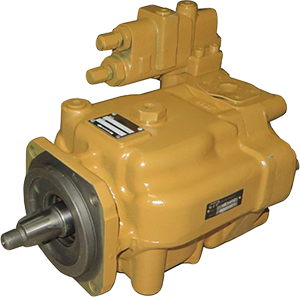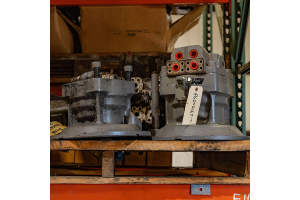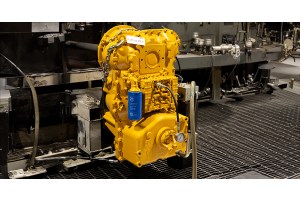
In the world of hydraulic systems, the concept of displacement plays a crucial role in determining the flow and performance of pumps. Piston pumps, known for their ability to handle high pressures and deliver precise flow control, come in two main displacement variants: fixed displacement and variable displacement.
Fixed Displacement: Steadfast Performance
The fixed displacement piston pump is akin to a gear pump in terms of its output flow proportional to input shaft speed. As the name suggests, the swash plate in a fixed displacement pump remains nonadjustable. This design makes fixed displacement piston pumps ideal for open center hydraulic systems, where a consistent flow rate is required. These systems often find application in various industries, including agriculture, construction, and material handling.
Variable Displacement: Adapting to Changing Needs
In certain applications, such as snow and ice control, it becomes necessary to vary the system flow without altering the engine speed. This is where the versatility of variable displacement piston pumps shines through. Unlike fixed displacement pumps, the swash plate in a variable displacement pump can be adjusted, allowing for precise control over the pump's output.
When higher flow rates are required, the swash plate angle changes, effectively increasing the pump's displacement by lengthening the piston stroke. Conversely, as the flow demand diminishes, the swash plate angle decreases, ensuring there is no excess flow or loss of hydraulic horsepower. This dynamic adjustment of the swash plate angle makes variable displacement piston pumps ideal for closed center hydraulic systems, where flow requirements vary based on operating conditions.
Flow Compensated, Pressure Compensated, and More
Variable displacement piston pumps can be further categorized based on their compensating mechanisms: flow compensated, pressure compensated, or a combination of both.
- Flow Compensated: These pumps maintain a constant margin of pressure by adjusting the swash plate angle in response to changing flow requirements. This ensures consistent performance even as the system demands fluctuate.
- Pressure Compensated: Regardless of variations in system pressure, a specified flow rate is maintained by continuously adjusting the swash plate angle. This allows for precise control and stability in hydraulic systems.
- Flow and Pressure Compensated Combined: Often referred to as load-sensing systems, these pumps offer the advantages of both flow and pressure compensation. Load-sensing systems are commonly employed in snow and ice control vehicles, where the ability to adjust to varying flow demands is essential for efficient operation.
Unlocking the Potential of Displacement
Understanding the nuances of displacement in piston pumps is crucial for harnessing their full potential in hydraulic systems. Whether you require a steadfast flow rate or the flexibility to adapt to changing operating conditions, piston pumps offer a range of solutions. By choosing the appropriate displacement type, whether fixed or variable, and understanding the compensating mechanisms available, designers and technicians can optimize system performance and achieve efficient hydraulic power.
Displacement plays a vital role in the functionality of piston pumps. Fixed displacement pumps provide consistent flow rates in open center systems, while variable displacement pumps offer the versatility to adjust flow rates based on varying operating conditions in closed center systems. By comprehending the benefits and capabilities of different displacement options, hydraulic system designers and operators can unleash the full potential of piston pumps and maximize efficiency in their applications.
Need a replacement hydraulic pump? Click below to get a quote today!









